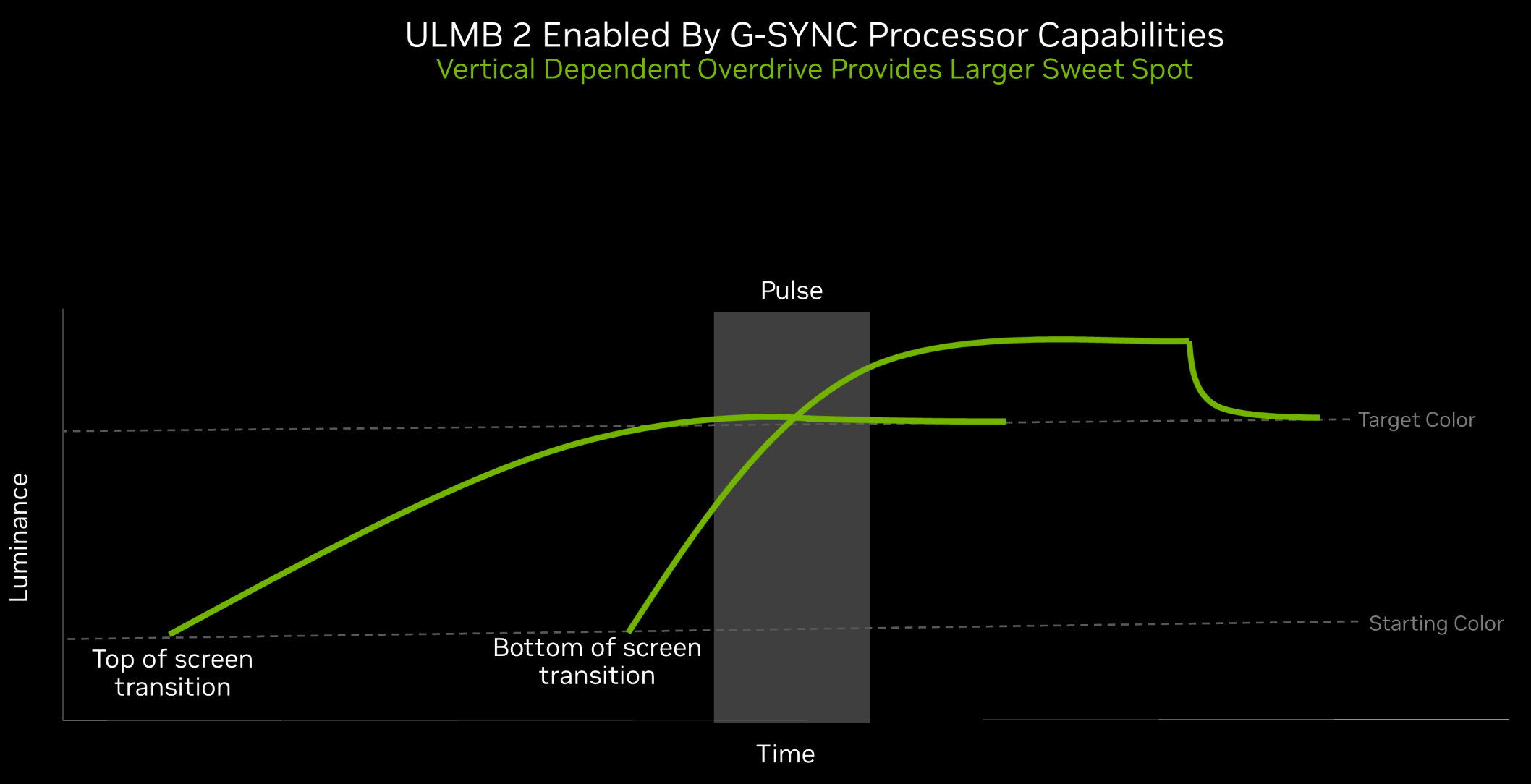NVIDIA introduces G-SYNC ULMB 2 technology
- May 30, 2023
- 0
ULMB 2 is the second generation of NVIDIA’s proprietary technology, which the green giant launched in 2015 with the aim reduce screen blur when moving. An important aspect
ULMB 2 is the second generation of NVIDIA’s proprietary technology, which the green giant launched in 2015 with the aim reduce screen blur when moving. An important aspect

ULMB 2 is the second generation of NVIDIA’s proprietary technology, which the green giant launched in 2015 with the aim reduce screen blur when moving. An important aspect in competitive games such as shooters, flight simulations or sports where we find objects or scenes with fast movements.
Adding context, let’s say the original technology of this Ultra Low Motion Blur It was a huge improvement over its Lightboost predecessor, but few players ended up using it for reasons you’ll understand below. You have to explain it eye tracking motion blur it is an inherent part of screen technologies because each pixel needs a certain amount of time to change brightness and color. As the subject moves faster, the screen has more difficulty rendering the image accurately.
To combat this lack of focus, you can act on two fronts. On one hand increasing the refresh rate (something current monitors have been able to do) and on the other hand turning off the backlight between image updates using a technique called “strobe backlighting”. The problem with the original ULMB was that the response times of the 2015 monitors were quite slow (30 or 60 Hz) and turning the technology on caused ghosting and/or blurring.
To compensate, ULMB lowered the refresh rate to give pixels more time to render. Moreover, its use was incompatible with another even more important technology, G-SYNC image synchronization. As a result, players, especially players of competitive titles, have rejected the use of ULMB.
Thanks to the increased refresh rate of modern monitors (otherwise it would not be possible), NVIDIA promises effective “purity of movement” in the second generation of this technology. above 1000 Hz. On an advanced 360Hz monitor with ULMB 2 enabled, the effective motion clarity would be 1440Hz. This means that to achieve the same level without ULMB 2, gamers would need a typical 1440Hz panel, something that cannot be achieved. because the current limit is 500 Hz.
NVIDIA used a lab test panel to show the results of this technology. The figure shows an example of a 120Hz monitor with strobe backlight compared to a 480Hz monitor without strobe backlight:
The “trick” of ULMB 2 is in this the backlight is only turned on when each pixel has the correct color value. The idea is not to display the pixels in the transition and only display them at that moment. However, this technique presents a challenge, the backlight usually illuminates all the pixels at the same time as the pixels change in a continuous scan. At any given moment, part of the screen will have a double image in an effect known as crosstalk.
Solving this problem is what sets ULMB 2 apart from other strobe backlighting techniques, as you can control the response time depending on where the vertical scan is, so pixels across the panel are at the right level at the exact moment for the backlight to start flashing. NVIDIA calls it “Vertical Dependent Overdrive”.

As a result, this technology, always according to the green giant, will offer a great image quality even at a high refresh rate where the optimal window for stroboscopic backlighting is small. NVIDIA says there are two monitors on the market capable of enabling this technology with a firmware update and they are:
The company also announced new monitors from ASUS and AOC with this technology:
It should be said that ULMB 2 cannot work with G-SYNC, so you need to turn off the image sync technology first. The truth is like this It is a very technical problem that we will have to see in practice check its effectiveness. Try it. We leave the notification and operation of this technology to you:
Source: Muy Computer
Donald Salinas is an experienced automobile journalist and writer for Div Bracket. He brings his readers the latest news and developments from the world of automobiles, offering a unique and knowledgeable perspective on the latest trends and innovations in the automotive industry.